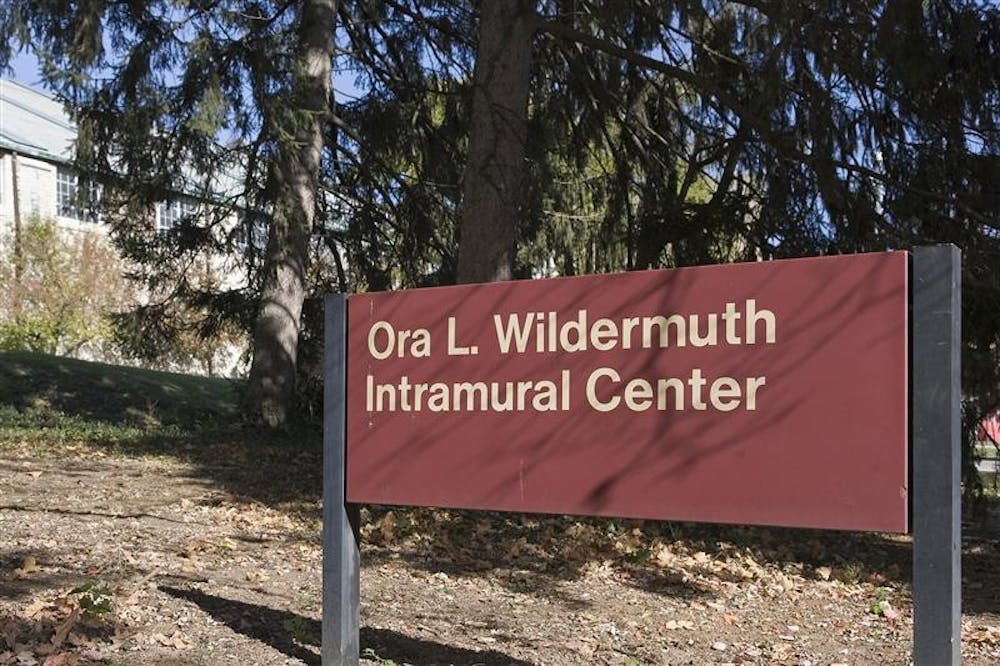After more than a year and a half of deliberation and controversy, University officials have recommended the Ora L. Wildermuth Intramural Center add the name of former IU basketball player William L. Garrett.
The change to the William L. Garrett/Ora L. Wildermuth Fieldhouse, which juxtaposes the name of a “civil rights hero” with a segregationist’s, still has to go through University trustee approval, said Terry Clapacs, head of the All University Committee on Names and IU’s vice president and chief administrative officer.
He said the committee made the recommendation to IU President Michael McRobbie, and McRobbie will present the recommendation to the board of trustees during a facilities committee meeting Nov. 19.
The committee also recommended the creation of an annual “signature series” lecture and conference that focuses on what prompted the name change.
Garrett came to IU in 1947 and became the first black basketball player in IU history when he suited up for former coach Branch McCracken his sophomore year.
What made Garrett distinct, besides being a good player, was his character, said Tom Graham, co-author of a book about Garrett, “Getting Open: The Unknown Story of Bill Garrett and the Integration of College Basketball.”
Graham said he was a role model, and this helped make it acceptable for black players in the eyes of coaches.
Clapacs also said the committee did not want to remove Wildermuth’s name because they thought it was unfair to take what Wildermuth said decades ago and bring it into today’s light.
In April 2007, former Indiana Daily Student columnist Andrew Shaffer, who graduated in 2007, wrote a column urging administration to change the name of the building after reading letters expressing strong segregationist views. The letters were between Wildermuth and former IU President Herman B Wells, as well as letters between Wildermuth and former IU comptroller Ward G. Biddle.
“So few of them succeed,” Wildermuth wrote in a 1948 letter to Wells about blacks, “and the average of the race as to intelligence, economic status and industry is so far below the white average that it seems to me futile to build up hope for a great future.”
After Shaffer’s column, IU officials reviewed the building’s name.
Graham’s daughter and the book’s co-author Rachel Graham Cody, originally uncovered the Wildermuth letters Shaffer used in his articles in University archives.
James Garrett, nephew of Bill Garrett and a Shelbyville, Ind., resident, said he is “truly proud and honored” by the name change.
He said he first questioned how the University was going to explain the two names. But then he said he thought it could be a teaching experience – the two names connected would create questions and an opportunity to learn.
No one is going to change history, James Garrett said, but this is a way to explain history.
“We cannot deny the history of this country,” said Edwin Marshall, vice president for diversity, equity, and multicultural affairs and a member of the All University Committee on Names. “Education is about creating opportunities.”
He said ignoring history’s various views – even those of Wildermuth – does not help them go away.
But some believe the decision is a weak compromise. Shaffer said he was unhappy with the recommendation.
“This is totally something IU would do,” Shaffer said Monday.
He lamented that IU is doing the most politically correct thing it can, adding it was hard to commend the “safe road.”
“I’m happy for Bill Garrett and his legacy,” Shaffer said.
Wildermuth was head of the board of trustees from 1938 to 1949, in a time when the campus was slowly becoming desegregated. Wildermuth was an obstacle to that process, Graham said.
But Wildermuth was also a founding citizen of Gary, a judge, a school teacher and an IU trustee from 1925 to 1952. He helped bring funds and buildings to IU, including having a large part in building the gymnasium named in his honor, Graham said.
The man who helped to integrate IU while Wildermuth fought against it, Wells, was chair of the committee to name the building after Wildermuth. The committee did not want to second guess such an influential IU figure, Clapacs said.
“We still trust the judgment of Herman B Wells,” he said.
Committee: Keep Wildermuth, add basketball legend to intramural center's name

Get stories like this in your inbox
Subscribe





